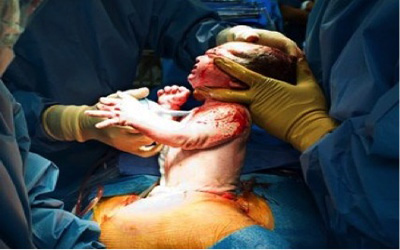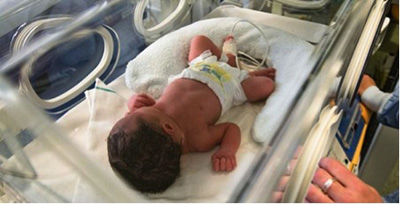
Source: www.babble.com
A gorgeous looking couple entered an Obstetrics and Gynaecology room for a normal antenatal visit. She’s already in her final trimester with normal pregnancy and while discussing her plans for delivery, suddenly an unexpected request was thrown to the attending doctor. “Doctor, can we just proceed with a caesarean section?’ The innocent doctor asked “Why do you want a caesarean section when the pregnancy has been going smoothly?” The most unwanted answer nearly made the doctor fainted, ”malaslah nak teran (can’t be bothered to push)” and the doctor’s heart just exploded.
The doctor’s reaction is totally understandable. C-section rates had been increasing and in most hospitals in Malaysia the rates can go up to 20-30% in government setting and crazily up to 60% in certain private sectors! Maternal request, even though not the main indication, contributes greatly to this increase of C-section rates and is becoming more widespread. Maybe with the current body image conscious society that thinks normal delivery may alter their body shape and cause difficulty to get back to their previous self, opting for caesarean section somehow sounds more exciting and logical. Not to mention those who think they are too posh to push and those who fear pain, making vaginal delivery sounded like a horror movie!
Most doctors do not really entertain this maternal request for caesarean section without proper medical indications but the current day patient who are very ”Google” equipped, celebrity inspired and very firm on their beliefs will start demanding up their rights, freedom to choose and etc. Well, no one is denying that patients are in charge of their own body but will they accept the fate if any mishaps or complications arise from their request after that? Many times, they will claim that they were not informed entirely on the consequences of the procedure or immediately accuse the doctors of negligence. Well, an informed consent is vital and should be freely given especially with elective cases where time is not of the essence.
C-section, even though is the safest and most common obstetrics procedure, is not without risks or complication. Imagine going for an elective caesarean section for nonspecific maternal request but ending up in the Intensive Care Unit due to high spinal anaesthesia, getting your womb removed for a life saving procedure following massive bleeding, or even requiring intubation due to an embolism or even death!

Source: www.charitygiving.co.uk
It is still a major operation which requires anaesthesia. The most common anaesthesia for a C-section is a spinal anaesthesia which involves inserting a small needle into the space in between the backbones. Potential risks are failed procedure requiring intubation, high spinal anaesthesia leading to difficulty in breathing, and even sudden drop in the blood pressure that may be fatal. The operation itself requires entering the abdomen in layers meaning risks of bleeding, injuries to surrounding organs and later on infection which is sometimes unavoidable. Post operatively complications like hernia or wound gapping with infection may expose the patient to the risk of another operation to fix these complications.
Then come the longer term complications of C-sections. Complaints such as pain at operation site, ugly wound and lower self-esteem due to scars on abdomen are commonly heard. Decision on subsequent pregnancies are more difficult in those with previous caesarean section. Morbidly adhered placentas, in which the placenta is unable to be detached from the uterus at delivery, are more common in those who had undergone caesarean section. This is potentially fatal with massive harmful postpartum bleeding that may require removal of the womb in order to save life. It is a nightmare to the whole attending medical team and of course to the patient. Fear of wound dehiscence or gapping during labour for those who had trial of vaginal delivery seemed scarier to most patient who had undergone caesarean section, making the options of repeated caesarean section more likely to happen. Proper selection of patients may reduce this risk and with success rate of vaginal delivery of about 70-80%, the minimal risk of scar dehiscence of less than 1% sounds little less scary.
The baby may be injured during caesarean section upon opening up the uterus. While it’s fairly safe for the baby to be delivered via caesarean section, delivery of less than 39 weeks had been associated with difficulty in breathing for these babies which may require Special Care in the Intensive Units.
The aim is to reduce the caesarean section risk due to associated morbidity and mortality with it. However reducing the rates alone doesn’t mean anything if the mind-set of people surrounding the issue is not changed, be it the medical practitioner or patients themselves. Labour has been orchestrated nicely by God that things happened as it should when the time is right in the correct order. Of course, this article does NOT refer to those who really benefits from caesarean section for obstetrically indicated reasons. It’s just that as soon to be parents to your future kids, let’s think of ourselves less than the potential risks to you and your baby if you choose to deliver surgically for the mere reason of ‘I’M TOO POSH TO PUSH’!
Major (Dr) Che Hasnura is an Obstetric & Gynaecology specialist who has also served in overseas missions. Find out more about her at The Team page.
[This article belongs to The Malaysian Medical Gazette. Any republication (online or offline) without written permission from The Malaysian Medical Gazette is prohibited.]
